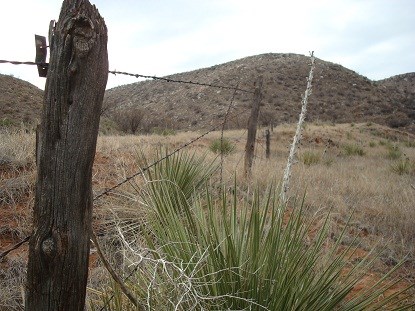
NPS Photo After the Plains Indians were forcibly removed from the Texas Panhandle, W.H. Bates and David T. Beals established the LX Ranch in 1877, which included present-day Alibates Flint Quarries and the surrounding area. The ranch raised longhorn cattle. Each year, two or three herds were trailed to Dodge City, Kansas, and then shipped to Chicago. The ranch eventually grew to 187,141 acres, extending from Palo Duro Canyon to present-day Dumas. In 1884, the LX Ranch was sold to the American Pastoral Company of London, along with 45,000 cattle and 1,000 horses. In 1906, Charles Gould, a geologist, came to the ranch searching for oil and gas. A local cowboy, Allen "Allie" Bates, showed Gould around the area. Allie Bates was living in an unnamed ravine in a dugout, so Gould named the ravine and nearby features after him, shortening the name to "Alibates." While exploring the area, Gould noted a "dipping rock ledge, finding it to be a white dolomite" this was the dolomite layer that Alibates flint was formed in. Gould also saw the agatized dolostone (Alibates flint). He later realized that Alibates flint was used by the Folsom culture. The ranch was sold again in 1910 and divided. Current-day Alibates Flint Quarries land was sold to a rancher named Lee Bivins, who eventually was said to own the most land west of the Mississippi in the 1920s. Natural gas was found on his land here in Potter County in 1918. |
Last updated: January 12, 2016
